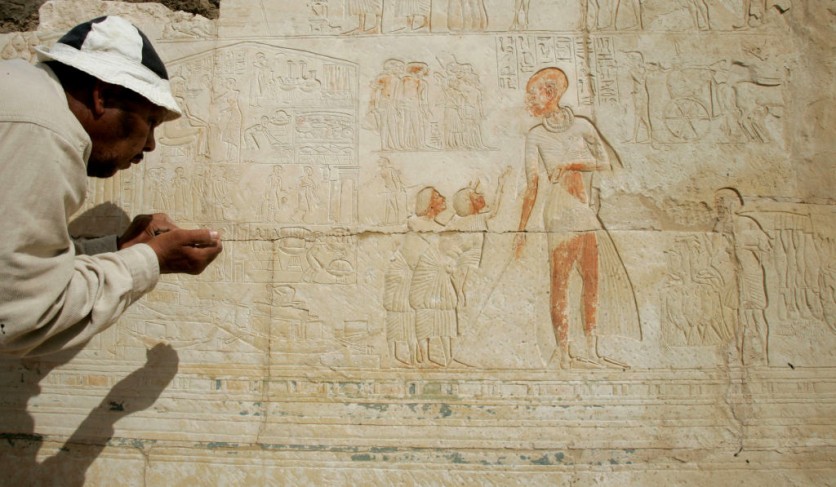Dutch and Italian archaeologists working with Egypt's Supreme Council of Antiquities have stumbled upon an exciting new discovery, according to a report by Artnet.
They have found a 3,200-year-old tomb complex in Saqqara belonging to Panehsy, a steward of the temple of Amun who lived at the height of Pharaoh Ramses II's rule.

The Magnificence of the Ancient Era
Inside the complex, the freestanding temple, colonnaded courtyard, underground burial chambers, and three chapels testify to the magnificence of the era. Archaeologists uncovered intriguing artifacts, including images of Panehsy and his wife Baia participating in religious ceremonies.
One of the most remarkable discoveries in the tomb is a detailed stone relief portraying the dead couple seated opposite a priest named Piay, who was identified through hieroglyphic text.
Archaeologists suggest that Piay, identified as a priest in an elaborate stone relief found in the tomb complex, held a subordinate position to Panehsy and oversaw the management of his burial and death cult.
The tomb complex's eastern side features four-period chapels, two of which have well-maintained wall reliefs that illustrate a funeral procession and depictions of the afterlife. The excavation brings to light new insights into the development of Saqqara Necropolis during the Ramesside period.
The tomb complex, which was discovered in 2019, was put on hold due to the pandemic. However, the team resumed their excavation work in September 2022, with the most recent work occurring in February and March of this year.
Lara Weiss from the National Museum of Antiquities in Leiden and Christian Greco, director of the Egyptian Museum in Turin, are leading the excavation
Lara Weiss expressed her enthusiasm for the discovery and its potential to enhance our understanding of ancient Egyptian life. She explained that each new discovery at the site sheds more light on the culture and practices of the ancient Egyptians who lived there.
Read Also : Archaeologists Step Back in Time by Reconstructing Roman Gateway During Britain's Invasion
Archaeological Digs for a Century
Archaeological excavations have been centered on Saqqara for more than a hundred years, as it became the preferred site for burials of the ancient Egyptian capital of Memphis around 3000 B.C.E. Archaeologists anticipate that the site will further divulge knowledge about life during the early dynastic era to the Greco-Roman epoch.
The new archaeological discovery is significant because it sheds new light on the development of the Saqqara Necropolis during the Ramesside period and provides insights into the lives of ancient Egyptians during this time.
The tomb complex is also notable for its impressive architecture, including a freestanding temple, a colonnaded courtyard, and underground burial chambers.
The find also highlights the ongoing importance of the Saqqara site as a valuable resource for understanding ancient Egyptian history and culture.
Related Article : French Archaeologists Uncover Ancient Roman-era Monumental Complex from the 2nd-3rd Century AD

ⓒ 2025 TECHTIMES.com All rights reserved. Do not reproduce without permission.




